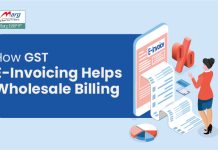Introduction
In the digital age, businesses are constantly seeking ways to streamline processes and improve efficiency. One significant advancement in this realm is the adoption of electronic invoicing, or e-invoicing. E-invoicing revolutionizes the traditional invoicing system by eliminating paper-based transactions and embracing a more secure, accurate, and eco-friendly method. As we step into August 2023, there are exciting developments on the horizon – the increase in e-invoice limits. In this blog post, we will delve into the significance of this change and explore how it benefits businesses worldwide.
Understanding E-Invoicing
E-invoicing refers to the electronic exchange of invoice data between suppliers and buyers. It enables businesses to automate the invoicing process, reducing manual errors, eliminating paper wastage, and accelerating payment cycles. E-invoices are digitally generated, transmitted, and received in structured formats, such as XML or JSON, ensuring seamless integration with accounting systems and facilitating faster processing.
The Current E-Invoice Limits
Before we discuss the upcoming changes, let’s briefly touch upon the existing e-invoice limits. Different countries and regions have varying regulations regarding e-invoicing thresholds. These thresholds determine the monetary value above which businesses are required to issue e-invoices instead of paper-based ones. The limits are typically set to ensure widespread adoption of e-invoicing while considering the needs and capabilities of businesses.
The August 2023 E-Invoice Limit Increase
Starting from August 2023, several countries worldwide are set to raise their e-invoice limits, expanding the scope of businesses eligible for electronic invoicing. The exact limits and regulations may vary by country, but the general trend is to increase the threshold to accommodate a broader range of transactions within the e-invoicing framework.
The decision to raise e-invoice limits comes as a response to the growing acceptance and success of e-invoicing systems globally. By increasing the limits, governments aim to encourage more businesses to adopt e-invoicing and reap its numerous benefits. This shift will enable small and medium-sized enterprises (SMEs) and larger organizations alike to transition from traditional paper-based invoicing to electronic methods, thereby saving costs, increasing efficiency, and reducing their environmental impact.
Benefits of the Increased E-Invoice Limits
a. Cost Savings: With higher e-invoice limits, more businesses can leverage electronic invoicing, reducing costs associated with paper, printing, and mailing. Additionally, automated processing of e-invoices saves time and labor, allowing businesses to reallocate resources more effectively.
b. Improved Efficiency: E-invoicing streamlines the entire invoicing process, from creation to payment, eliminating manual errors and reducing processing times. The increased e-invoice limits will enable a larger volume of transactions to be processed electronically, enhancing operational efficiency across industries.
c. Reduced Environmental Impact: Shifting from paper-based invoicing to e-invoicing has a significant positive effect on the environment. By reducing paper consumption, businesses can contribute to sustainability efforts and minimize their carbon footprint.
d. Enhanced Accuracy and Security: E-invoices are generated using structured data, minimizing the risk of errors commonly associated with manual data entry. Additionally, the digital nature of e-invoices ensures secure transmission and storage, reducing the chances of fraud and unauthorized access.
Steps to Prepare for the Change
To make the most of the increased e-invoice limits, businesses should consider the following steps:
a. Stay Updated: Regularly monitor regulatory changes and stay informed about the e-invoicing regulations specific to your country or region. This will help you understand the new e-invoice limits and comply with the updated requirements effectively.
b. Evaluate Service Providers: If you haven’t implemented e-invoicing yet, assess various e-invoicing service providers to find the most suitable solution for your business needs. Ensure that the chosen provider supports the increased e-invoice limits and can seamlessly integrate with your existing systems.
c. Train Employees: Provide comprehensive training to your employees on the new e-invoicing processes and systems. Familiarize them with the benefits and best practices of e-invoicing to ensure a smooth transition.
Conclusion
As we approach August 2023, the increased e-invoice limits open up a world of opportunities for businesses to embrace digital transformation in their invoicing processes. With the broader scope for electronic invoicing, companies can experience cost savings, improved efficiency, enhanced accuracy, and a reduced environmental impact. By preparing adequately and staying updated on the evolving e-invoicing regulations, businesses can position themselves to thrive in this new era of electronic invoicing. Embrace the change and unlock the advantages that e-invoicing brings to your organization.
Read more useful content:
Frequently Asked Questions (FAQs)
Q1: What is an e-invoice limit?
A: An e-invoice limit refers to the monetary threshold set by regulatory authorities that determines when businesses are required to issue electronic invoices instead of paper-based invoices. It specifies the minimum transaction value above which e-invoicing becomes mandatory.
Q2: Why are e-invoice limits being increased from August 2023?
A: The decision to increase e-invoice limits stems from the growing acceptance and success of e-invoicing systems globally. By raising the limits, governments aim to encourage more businesses to adopt electronic invoicing and enjoy its benefits. This change allows a broader range of transactions to be processed electronically, promoting cost savings, efficiency, and environmental sustainability.
Q3: Which countries are increasing their e-invoice limits from August 2023?
A: The specific countries and regions that are increasing their e-invoice limits may vary. However, it is expected that several countries worldwide will implement this change simultaneously. It is advisable to stay updated on the regulations specific to your country or region to understand the new e-invoice limits applicable.
Q4: How will the increased e-invoice limits benefit businesses?
A: The increased e-invoice limits offer several benefits to businesses, including:
Cost savings by reducing expenses associated with paper, printing, and mailing.
Improved operational efficiency through automated invoice processing, resulting in faster payments.
Reduced environmental impact by decreasing paper consumption and supporting sustainability efforts.
Enhanced accuracy and security through structured data and secure transmission, reducing errors and fraud risks.
Q5: What steps should businesses take to prepare for the change in e-invoice limits?
A: To prepare for the increased e-invoice limits, businesses can consider the following steps:
Stay updated on the regulatory changes and understand the new e-invoice limits applicable to your country or region.
Evaluate e-invoicing service providers that support the increased limits and can seamlessly integrate with your existing systems.
Provide comprehensive training to employees on the new e-invoicing processes and systems.
Ensure compliance with the updated requirements and adapt internal procedures accordingly.
Q6: Can businesses still use paper-based invoicing if they choose to, even with the increased e-invoice limits?
A: While e-invoicing is being encouraged and the limits are being raised to promote its adoption, businesses might still have the option to use paper-based invoicing below the specified threshold. However, it is advisable to transition to e-invoicing as it offers numerous advantages in terms of cost savings, efficiency, and sustainability.
Q7: How can businesses ensure compliance with the increased e-invoice limits?
A: To ensure compliance, businesses should stay informed about the updated regulations, review their invoicing processes, and implement e-invoicing solutions that align with the increased limits. It is crucial to work with e-invoicing service providers that are compliant with the latest regulations and can assist in meeting the requirements effectively.
Q8: Will the increased e-invoice limits affect small and medium-sized enterprises (SMEs)?
A: Yes, the increased e-invoice limits are particularly beneficial for SMEs, as they allow a wider range of transactions to be processed electronically. SMEs can leverage e-invoicing to streamline their invoicing processes, save costs, and enhance efficiency, thereby competing on a level playing field with larger organizations.
Q9: Is there any international standard for e-invoice limits?
A: There is no universal international standard for e-invoice limits. Each country or region establishes its own regulations and sets the limits based on their specific requirements, economic considerations, and technological capabilities. It is important to consult the regulations applicable to your jurisdiction for accurate information.




















